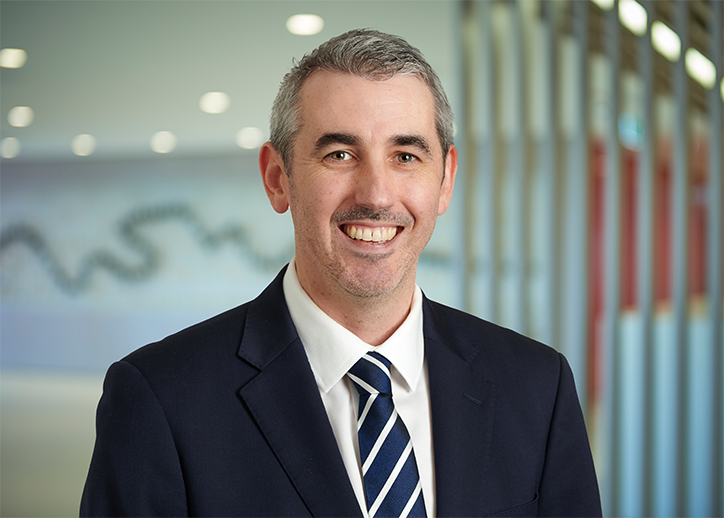Energy from Waste in Australia: A stuttering start but an optimistic future
Energy from Waste in Australia: A stuttering start but an optimistic future
This article is part two in our series ‘Unlocking opportunity: Navigating the future of waste and resource recovery’ through which our specialists explore the future of waste management and resource recovery.
Energy from Waste (EfW) offers a significant opportunity to support the circularity of Australia’s waste industry by recovering energy and valuable materials. EfW simultaneously enhances environmental outcomes compared to landfill, including reduced carbon emissions and waste diversion.
The EfW market in Australia has been characterised by lengthy development timelines and a limited number of projects reaching contract execution. Many projects have stalled in the development phase or remain in protracted development cycles. To date, only two projects have achieved contract execution, but both have faced significant construction challenges, with one entering administration.
What operational challenges does the EfW sector face?
EfW projects carry a unique mix of risks that require active management throughout the development phase, including:
- Community and public acceptance: Building social licence remains critical to project success
- Securing sufficient feedstock: Ensuring a reliable supply, typically from multiple providers, for a period that supports the facility's economic viability
- Energy offtake agreements: Obtaining contracts with creditworthy off takers in a market where long-term Power Purchase Agreements (PPAs) are less common
- Site selection: Finding locations that balance sufficient buffer distances from residents with manageable transport costs for feedstock providers
- Planning and development approvals: Navigating options for jurisdiction-specific pathways that vary in complexity and merit
- Funding or finance: Securing investment, which hinges on resolving all these challenges effectively.
Additionally, projects have been delivered under varied contract models, often modified during procurement, leading to increased complexity. The gradual development of waste policies between jurisdictions and disparities in waste levies across states has further discouraged market entry and participation.
This environment, combined with the sector's track record, has sharpened the focus on risk allocation among stakeholders, particularly regarding development and construction risk. The rising costs of construction materials due to inflation has escalated project costs, while public sensitivity to rising costs, especially in the current cost-of-living climate, makes passing costs onto ratepayers challenging.
Given these hurdles, the slow start of EfW in Australia is not surprising.
Reasons for optimism
Despite these challenges, there are compelling reasons to believe in a brighter future for EfW in Australia.
At a global level, EfW is a proven technology for residual waste management. Jurisdictions with mature EfW markets demonstrate that high recycling rates and EfW can coexist effectively.
Domestically, the residual waste landscape underscores the need for an EfW industry. Landfill airspace is diminishing, with approvals for new landfills becoming increasingly difficult. EfW provides an alternative by diverting waste from landfills, recovering energy and metals, and reducing carbon emissions. Future advancements, such as incinerator bottom ash and fly ash reuse, as well as carbon capture and storage technologies, could further enhance recovery rates.
Governments are also shifting their stance to acknowledge a role for EfW. States have developed EfW policies, and waste levies - such as the recent increase in Victoria and Queensland's reintroduced levy in 2019 - strengthen the economic case for EfW. Local councils are increasingly incorporating consideration of EfW into their waste management strategies, recognising its potential.
Project-level opportunities
At a project level, there are several reasons to be optimistic:
- Improved community engagement: Learnings from previous projects have informed best practices in community engagement and social licence development
- Established risk allocation models: Insights from both domestic and international projects can help inform baseline contractual positions and risk-sharing mechanisms
- Feedstock aggregation: Smaller councils have demonstrated effective feedstock aggregation models, and larger councils are also actively exploring EfW solutions.
Additionally, strategies exist to mitigate pitfalls encountered by earlier projects:
- Targeted project scopes: While incorporating ancillary infrastructure can offer benefits, over-scoping projects and scope changes during procurement should be avoided to minimise complexity
- Clear procurement strategies: Defining procurement approaches and commercial models early and testing these through market engagement can reduce risks during delivery
- Early site engagement: Securing appropriate sites and addressing planning requirements early in the process can streamline development timelines.
A collaborative path forward
The need for an EfW sector in Australia remains pressing given diminishing landfill availability, a lack of proven alternatives, and long lead times to develop projects. There is clear appetite from governments, operators, contractors, technology providers, and financiers - provided the delivery model is appropriate. However, the sector's unique risks demand collaboration and a collective approach to project development.
While challenges persist, there is reason for optimism. A more disciplined approach to managing development risks can enhance market confidence, increase participation, and lead to more successful project outcomes.
Our waste and resource recovery specialists can provide insights into the successful delivery of EfW projects and help you achieve circular economy outcomes. Contact us to discuss the waste and environmental requirements of your next project.

